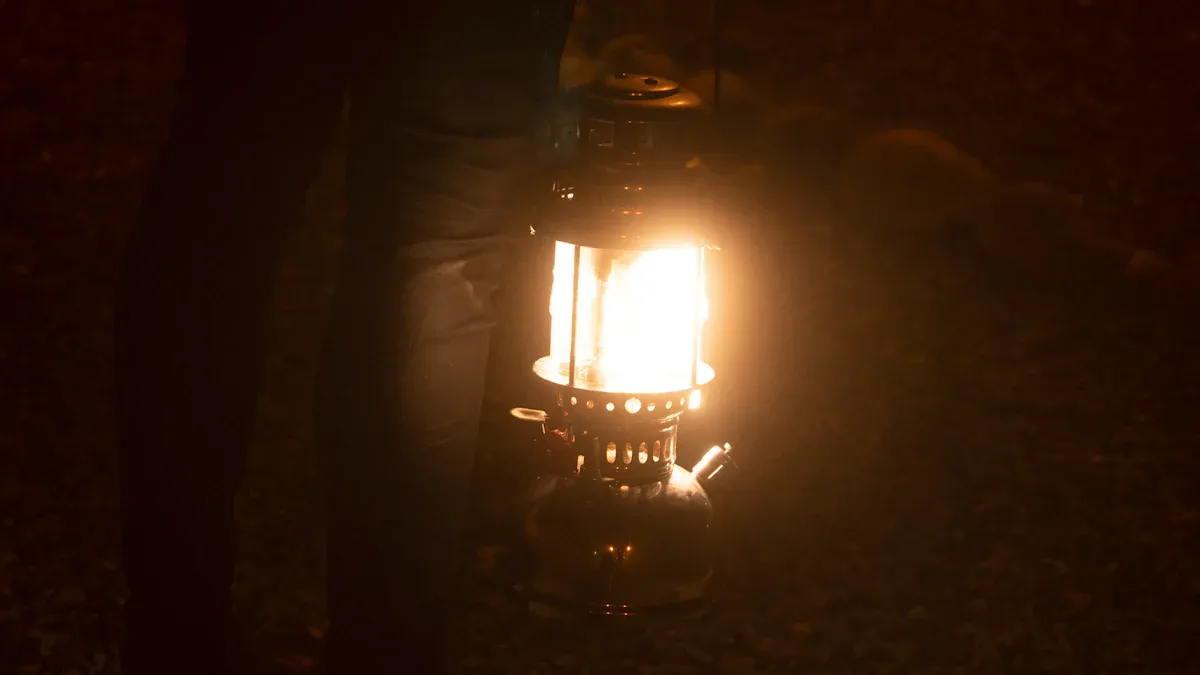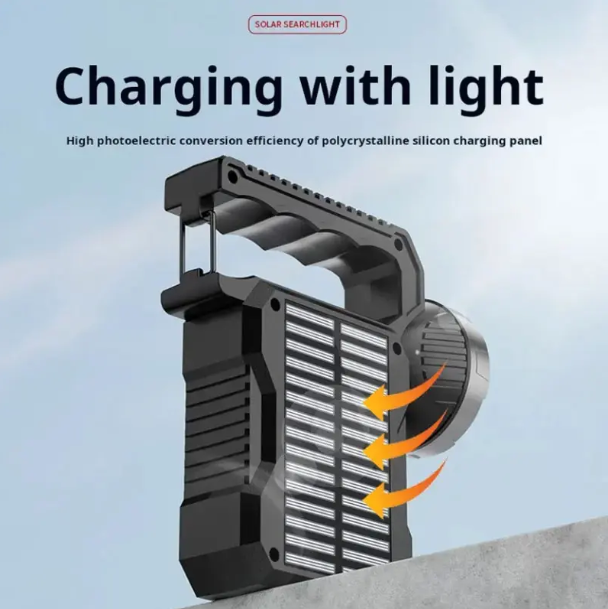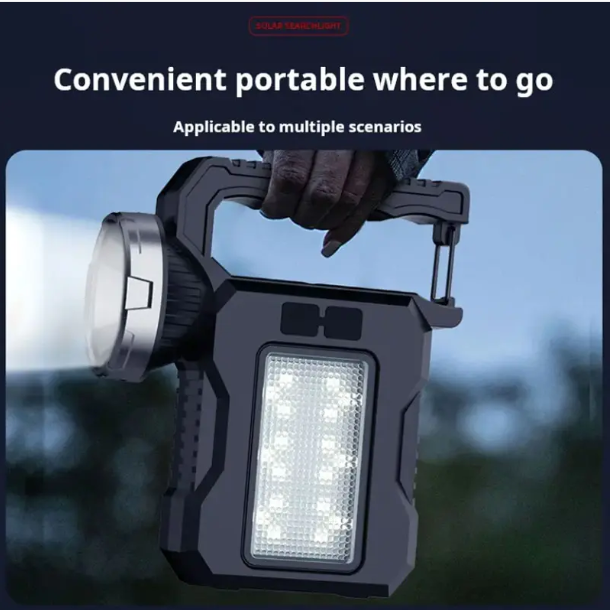 Confined spaces often pose unique challenges, especially when it comes to lighting. Excessive heat from traditional lights can create safety hazards and reduce efficiency. Heat-resistant work lights address these issues by offering reliable illumination without overheating. Options like LED work lights, explosion-proof designs, and low-voltage models ensure safe and efficient operation. These solutions not only enhance visibility but also minimize risks in environments where ventilation is limited or flammable materials are present.
Confined spaces often pose unique challenges, especially when it comes to lighting. Excessive heat from traditional lights can create safety hazards and reduce efficiency. Heat-resistant work lights address these issues by offering reliable illumination without overheating. Options like LED work lights, explosion-proof designs, and low-voltage models ensure safe and efficient operation. These solutions not only enhance visibility but also minimize risks in environments where ventilation is limited or flammable materials are present.
Key Takeaways
- LED work lights save energy and stay cool, perfect for small spaces.
- Explosion-proof lights stop sparks in risky areas, keeping workers safe.
- Low voltage lights lower electric risks, making them safer in tight spots.
- Checking and placing work lights correctly is key for safety and use.
- Lights with cooling systems stop overheating and give steady light.
Key Features of Heat-Resistant Work Lights

LED Technology
Low heat output and energy efficiency.
LED technology stands out as a cornerstone of heat-resistant work lights. These lights generate minimal heat, making them ideal for confined spaces where temperature control is critical. Their energy efficiency is remarkable, with systems offering up to 80% higher efficiency compared to traditional lighting options. This not only reduces energy consumption but also lowers operating temperatures, enhancing safety in volatile environments.
- LED work lights consume less power, leading to significant energy savings.
- Lower energy usage translates to reduced electricity costs and a smaller carbon footprint.
- Their low heat output minimizes the risk of overheating, ensuring safer operation in confined areas.
Long lifespan and consistent performance.
LED work lights deliver exceptional durability and reliability. With lifespans reaching up to 50,000 hours, they far outlast incandescent and fluorescent alternatives. This longevity reduces the need for frequent replacements, saving both time and money. Additionally, LED lights maintain consistent brightness throughout their lifespan, ensuring dependable illumination for demanding tasks.
- LED explosion-proof lights provide up to 50 times the lifespan of incandescent bulbs.
- Their consistent performance ensures reliable lighting in critical situations.
- Reduced maintenance requirements make them a cost-effective choice for long-term use.
Built-in Cooling Systems
Heat-dissipating materials and designs.
Heat-resistant work lights often incorporate advanced materials and designs to dissipate heat effectively. Aluminum housings and other heat-conductive materials draw heat away from critical components, preventing overheating. These features ensure the lights remain cool to the touch, even during extended use.
- Heat-dissipating designs enhance the durability of the lights.
- Materials like aluminum improve thermal management, extending the lifespan of internal components.
Active cooling mechanisms for temperature control.
Some models go a step further by integrating active cooling systems. These mechanisms, such as built-in fans or heat sinks, regulate internal temperatures, ensuring optimal performance in confined spaces. Active cooling not only enhances safety but also maintains the efficiency of the lights under challenging conditions.
- Active cooling systems prevent heat buildup during prolonged operation.
- These mechanisms ensure consistent performance in environments with limited ventilation.
Explosion-Proof Design
Reinforced housings to contain sparks and heat.
Explosion-proof work lights feature robust housings designed to contain sparks and heat. This construction prevents ignition in hazardous environments, such as those with flammable gases or dust. By isolating potential ignition sources, these lights provide a critical layer of safety.
Prevention of ignition in flammable environments.
The reliability of explosion-proof designs has been demonstrated in industries like oil refineries and chemical plants. For example, their use in truck paint booths has significantly reduced the risk of ignition, adhering to stringent safety standards. These lights are essential for maintaining safety in high-risk settings.
- Explosion-proof equipment effectively contains ignition sources within durable enclosures.
- Their adoption in hazardous industries highlights their importance in preventing accidents.
Low Voltage Options

Safer operation with reduced risk of overheating.
Low voltage work lights operate at 12 or 24 volts, significantly reducing the risk of electrical hazards. These lights are particularly effective in confined spaces where safety is paramount. By minimizing the potential for overheating, they ensure a safer working environment for professionals handling sensitive tasks.
OSHA mandates the use of low-voltage systems to minimize electrical hazards. Typically, this means using lighting equipment that operates at 12 volts or 24 volts. These lower voltages reduce the risk of electrical shock and potential ignition sources in potentially flammable or explosive atmospheres.
The reduced voltage not only enhances safety but also makes these lights suitable for environments with limited ventilation. Their compatibility with confined space requirements ensures reliable performance without compromising worker safety.
Compatibility with confined space requirements.
Low voltage options are designed to meet the unique challenges of confined spaces. Their compact and lightweight designs make them easy to position in tight areas. Additionally, their low heat output aligns with the need for temperature control in poorly ventilated environments. These features make low voltage work lights an essential tool for professionals working in challenging conditions.
Intrinsically Safe Components
Specialized designs to prevent overheating.
Intrinsically safe components are engineered to eliminate the risk of overheating, even in hazardous environments. These designs limit the energy available in the system, ensuring that sparks or excessive heat cannot ignite flammable substances. This technology is critical for maintaining safety in industries where volatile materials are present.
- Intrinsically safe technology is essential for compliance with safety standards in industries with flammable gases, vapors, and dust.
- The evolution of this technology is crucial for maintaining safety as industries adopt more advanced and interconnected devices.
- The implementation of intrinsically safe technology can lower insurance premiums by reducing the likelihood of accidents.
Enhanced safety for hazardous environments.
Industries such as oil and gas, mining, and chemical manufacturing rely heavily on intrinsically safe components. Devices like sensors and hand-held radios, designed with this technology, provide critical safety measures. They ensure safe communication and monitoring in high-risk areas. Strict regulations govern these components, ensuring they meet rigorous safety standards to prevent accidents.
- Intrinsically safe technology acts as a critical defense against catastrophic incidents in high-risk industries such as oil and gas, mining, and chemical manufacturing.
- Devices like sensors and hand-held radios, designed with intrinsically safe principles, are essential for monitoring hazardous environments and ensuring safe communication.
- The technology is governed by strict regulations and standards, ensuring that devices meet high safety criteria to prevent accidents.
By incorporating intrinsically safe components, heat-resistant work lights offer unparalleled safety and reliability. These features make them indispensable for professionals working in hazardous and confined spaces.
Benefits of Using Heat-Resistant Work Lights in Confined Spaces
Enhanced Safety
Reduced risk of burns, fire, or electrical hazards.
Heat-resistant work lights significantly reduce the risks associated with burns, fires, and electrical hazards. Their low heat output ensures that surfaces remain cool to the touch, even during prolonged use. This feature is particularly important in confined spaces where excessive heat could ignite flammable gases or dust. Explosion-proof LED lighting systems, for instance, operate at up to 80% higher energy efficiency than traditional options, resulting in lower operating temperatures and enhanced safety.
- Improved situational awareness allows workers to identify emergency exits quickly.
- Better detection of leaks, spills, or other hazardous conditions minimizes risks.
- Reduced eye strain and fatigue ensure workers remain alert and focused.
Proper illumination also alleviates psychological stress in confined spaces. By creating a sense of openness, these lights help reduce feelings of claustrophobia, enabling workers to maintain focus and composure.
Safer working conditions in poorly ventilated areas.
In areas with limited ventilation, heat-resistant work lights provide a safer alternative to traditional lighting. Their advanced cooling systems and low voltage operation prevent overheating, ensuring a secure environment for workers. These features make them indispensable for industries requiring strict adherence to safety standards.
Energy Efficiency
Lower energy consumption and costs.
Heat-resistant work lights, particularly LED models, consume significantly less energy than traditional lighting systems. This efficiency translates to lower electricity costs and reduced environmental impact. For example, LED lights can achieve up to 80% energy savings, making them an economical choice for long-term use.
Environmentally friendly lighting solutions.
The energy efficiency of these lights contributes to their eco-friendliness. By consuming less power, they reduce carbon emissions and support sustainable practices. Their long lifespan further minimizes waste, as fewer replacements are needed over time.
Durability and Longevity
Longer-lasting lights for tough conditions.
Heat-resistant work lights are designed to withstand challenging environments. LED explosion-proof lights, for instance, offer an operational lifespan of up to 50,000 hours, far exceeding the 1,000-hour lifespan of incandescent bulbs. Their durability is validated through rigorous testing, including IES LM-80 results and TM-21 calculations.
- IP66-rated protection ensures resistance to dust and moisture.
- IK10 certification guarantees impact resistance, making them suitable for tough conditions.
- Robust construction allows these lights to endure 3G vibration forces and 1,200 hours of salt spray exposure.
Reduced need for frequent replacements.
The exceptional longevity of heat-resistant work lights reduces the need for frequent replacements, saving both time and resources. Their durable design ensures consistent performance, even in harsh environments, making them a reliable choice for professionals.
Top Recommendations for Heat-Resistant Work Lights
LED Work Lights
Examples of top-rated LED models for confined spaces.
LED work lights are a popular choice for confined spaces due to their compact design and energy efficiency. Models like the Milwaukee M18 LED Flood Light and the DeWalt DCL079R1 Tripod Light stand out for their reliability and performance. These lights are engineered to fit into tight spaces while providing consistent illumination. Their long lifespan and compliance with safety standards make them ideal for industrial and construction applications.
| Feature | Description |
|---|---|
| Compact Design | LED work lights are designed to fit in confined spaces where traditional lights cannot. |
| Energy Efficiency | They consume less power while providing adequate illumination. |
| Long Lifespan | LED lights have a longer operational life compared to traditional lighting. |
| Safety Features | Compliance with safety regulations ensures safe usage in confined spaces. |
| Portability | Lightweight and easy to transport, making them ideal for temporary setups. |
Features like portability and adjustable brightness.
Portability and adjustable brightness enhance the usability of LED work lights. Lightweight designs allow workers to move them easily between locations, while adjustable brightness settings ensure optimal lighting for various tasks. Many models also feature corrosion-resistant materials and battery backup capabilities, making them suitable for challenging environments.
Post time: Mar-14-2025
 fannie@nbtorch.com
fannie@nbtorch.com +0086-0574-28909873
+0086-0574-28909873





